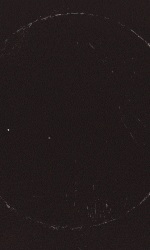Back from the dead
If you’re here to find out how to fix a Mac that won’t start, we’ve got your back. Most of us have come to take for granted that our Mac, iPhone, or iPad just sort of… work. So, when things go wrong, such as a Mac not starting up, we're more likely to be caught out. Luckily, there’s almost nothing that can go wrong that hasn't gone wrong for several other people at some point in the past, which means that in most cases, there’s going to be a fix.
Especially when you utilize your Mac or MacBook for productivity or creative work, you need it in top shape and ready to perform whatever task we demand of it. Therefore, knowing how to fix a Mac that won’t start, preferably without help from an expert who will charge you a few hundred dollars, is a skill that will come in handy and save you some money.
That’s what we’re here for. We gathered some of the most common fixes you can try if your Mac refuses to start or boot. Obviously, there will be some extreme cases in which you’ll require professional help, and there are plenty of authorised service centres ready and able to provide it, as well as the Genius Bars at Apple Stores. But, most of the time, it’s a simple issue with a simple fix.
Mac folder with question mark: what does it mean?
If your Mac starts up to a Mac folder with a question mark, it could mean one of two things: (1) your startup disk is no longer working because either you previously started your Mac from a different disk or your hard drive has failed, or (2) there’s no working operating system installed.
It’s a scary thing, turning on your Mac only to find a solitary folder with a question mark on a solid black background. But, worry not. As long as it’s not a hard drive that’s stopped working completely, there might be a way to get your Mac back to the way it was.
Step 1: Press and hold the power button for 10 seconds to turn your Mac off.
Step 2: Turn on your Mac, and hold Command (⌘) + R. This takes you to macOS Recovery.
Step 3: Select Disk Utility, press continue and find your startup disk in the sidebar.
Step 4: Click “First Aid” and hit Run. This should prompt your Mac to find errors and repair them.
If Disk Utility did not find or could not repair all the errors, you might have to reformat the disk, reinstall the macOS or restore a backup using the Time Machine.
However, if you can’t perform this repair because Disk Utility just isn’t seeing your startup disk, you might have to take it to a Mac expert to get serviced.
![#Em i[N]O'](https://csblackdevil.com/forums/uploads/monthly_2020_08/0CQEnca.gif.89260b93d070fa78ade9301560a4dab3.thumb.gif.ce367598bee17eb045a11ffd2211d655.gif)








.thumb.jpg.7a118669e5356203bbaa73355120daeb.jpg)











